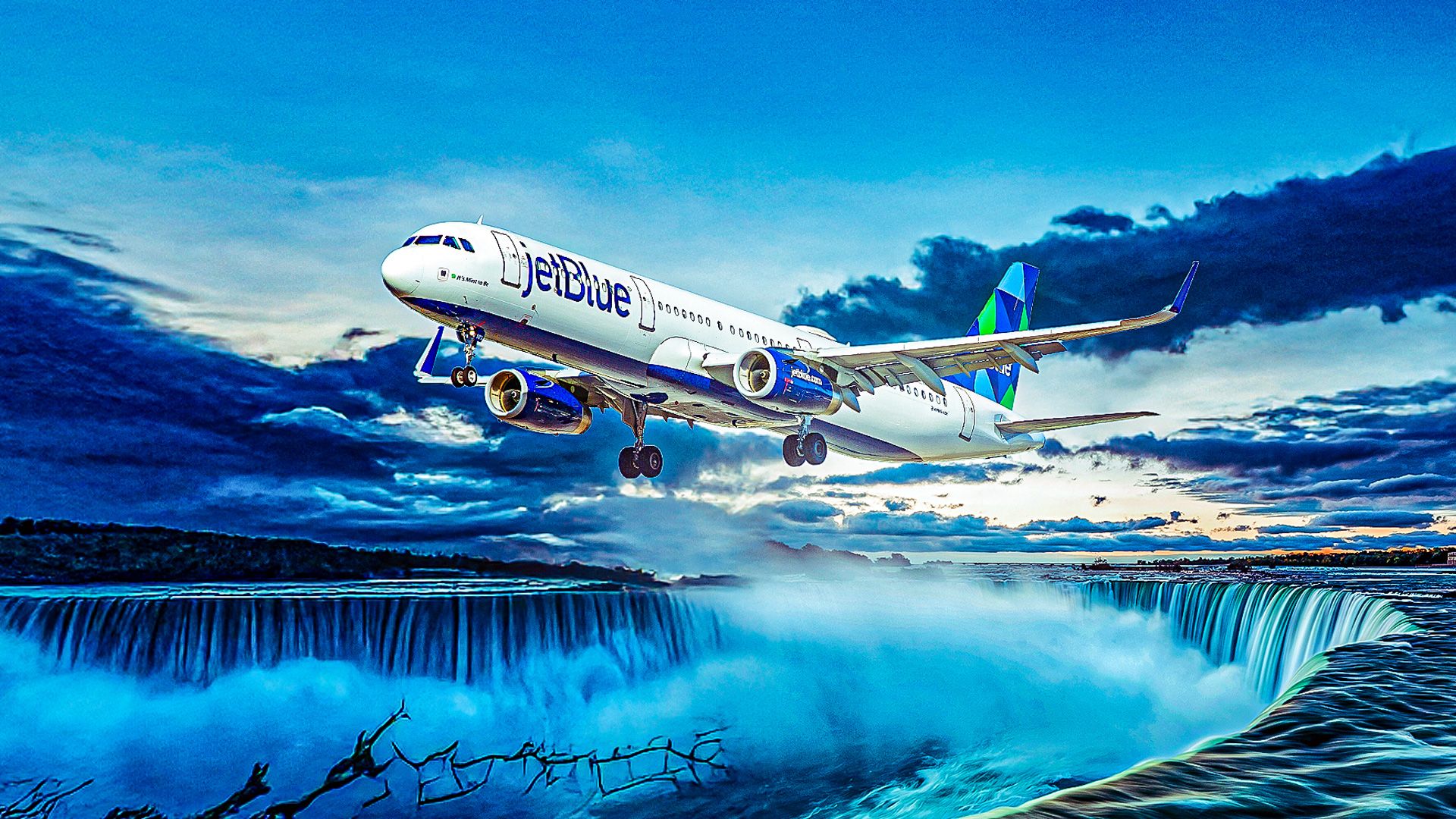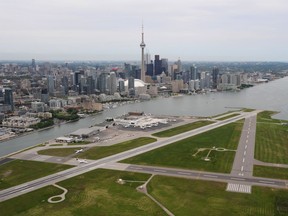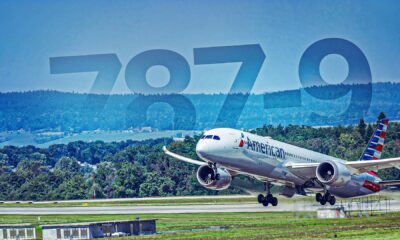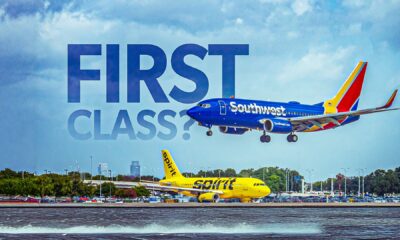World
JetBlue Expands Fleet with Modern Airbus Aircraft by 2025

JetBlue Airways, based in New York, is set to enhance its fleet significantly by 2025, focusing exclusively on Airbus aircraft. As a hybrid carrier, JetBlue plays a vital role in the American aviation landscape, even though it does not match the scale of low-cost leader Southwest Airlines or the expansive fleets of major legacy carriers like American Airlines, Delta Air Lines, and United Airlines. The carrier’s decision to operate a fully Airbus fleet marks a critical step in its operational strategy.
Current Fleet Overview
JetBlue’s fleet currently includes aircraft from three Airbus families: the A320ceo, A320neo, and A220. The A320ceo series represents the oldest segment of the fleet, with the A320-200 variant being the most prevalent. With 130 A320-200s in operation, these aircraft account for nearly half of JetBlue’s total fleet. According to data from ch-aviation, the average age of these aircraft is 20.2 years, showcasing their longevity in service. They come in all-economy configurations, with seating capacities of either 150 or 162.
Additionally, JetBlue operates 63 A321-200s, which have an average age of 9.3 years. These twinjets feature a one-class layout with 200 seats or a two-class configuration offering 159 seats. The airline recently completed the transition to an all-Airbus fleet, retiring its last Embraer E190 aircraft. As stated by the airline, “The E190 was instrumental in our early years and proved to deliver on critical connectivity in short-haul markets.”
Investments in Modern Aircraft
JetBlue’s growth strategy is closely tied to its recent investments in the A320neo series, which includes the A321neo and A321LR variants. The airline currently operates 28 A321neos and 11 A321LRs, with average ages of 4.3 years and 2.4 years, respectively. Notably, JetBlue has additional orders for 24 A321neos, which will expand its total of this model to 52.
The A321neo models offer seating configurations that range from 200 economy seats to a more premium layout featuring 16 Mint business class suites and 144 economy class seats. The A321LRs, designed for long-haul routes, provide a slightly lower density with 24 Mint business class seats and 114 economy seats. Looking ahead, JetBlue has also placed orders for 13 A321XLRs, further enhancing its capabilities for transatlantic flights.
The airline’s fleet transformation includes the introduction of the Airbus A220-300, which has replaced the E190s as JetBlue’s smallest aircraft. The A220-300s seat 140 passengers, with 30 seats featuring extra legroom. On average, these aircraft are just 1.9 years old, and JetBlue has plans to operate a total of 100 A220-300s following orders for an additional 46 units.
Passengers flying on JetBlue’s A220-300s can expect modern amenities, including in-seat power with universal AC and USB outlets. The aircraft also feature complimentary ViaSat-2 satellite WiFi and advanced inflight entertainment systems, enhancing the overall passenger experience.
JetBlue’s strategic investments in its fleet not only reflect its commitment to modern aviation standards but also aim to improve operational efficiency and customer satisfaction. As the airline continues to expand its reach, particularly in transatlantic markets, the all-Airbus strategy positions JetBlue as a competitive player in the evolving airline industry.
-

 World3 months ago
World3 months agoScientists Unearth Ancient Antarctic Ice to Unlock Climate Secrets
-

 Entertainment3 months ago
Entertainment3 months agoTrump and McCormick to Announce $70 Billion Energy Investments
-

 Lifestyle3 months ago
Lifestyle3 months agoTransLink Launches Food Truck Program to Boost Revenue in Vancouver
-

 Science3 months ago
Science3 months agoFour Astronauts Return to Earth After International Space Station Mission
-

 Technology2 months ago
Technology2 months agoApple Notes Enhances Functionality with Markdown Support in macOS 26
-

 Top Stories2 weeks ago
Top Stories2 weeks agoUrgent Update: Fatal Crash on Highway 99 Claims Life of Pitt Meadows Man
-

 Sports3 months ago
Sports3 months agoSearch Underway for Missing Hunter Amid Hokkaido Bear Emergency
-

 Politics3 months ago
Politics3 months agoUkrainian Tennis Star Elina Svitolina Faces Death Threats Online
-

 Technology3 months ago
Technology3 months agoFrosthaven Launches Early Access on July 31, 2025
-

 Politics3 months ago
Politics3 months agoCarney Engages First Nations Leaders at Development Law Summit
-

 Entertainment3 months ago
Entertainment3 months agoCalgary Theatre Troupe Revives Magic at Winnipeg Fringe Festival
-

 Politics2 weeks ago
Politics2 weeks agoShutdown Reflects Democratic Struggles Amid Economic Concerns





















